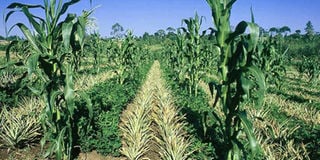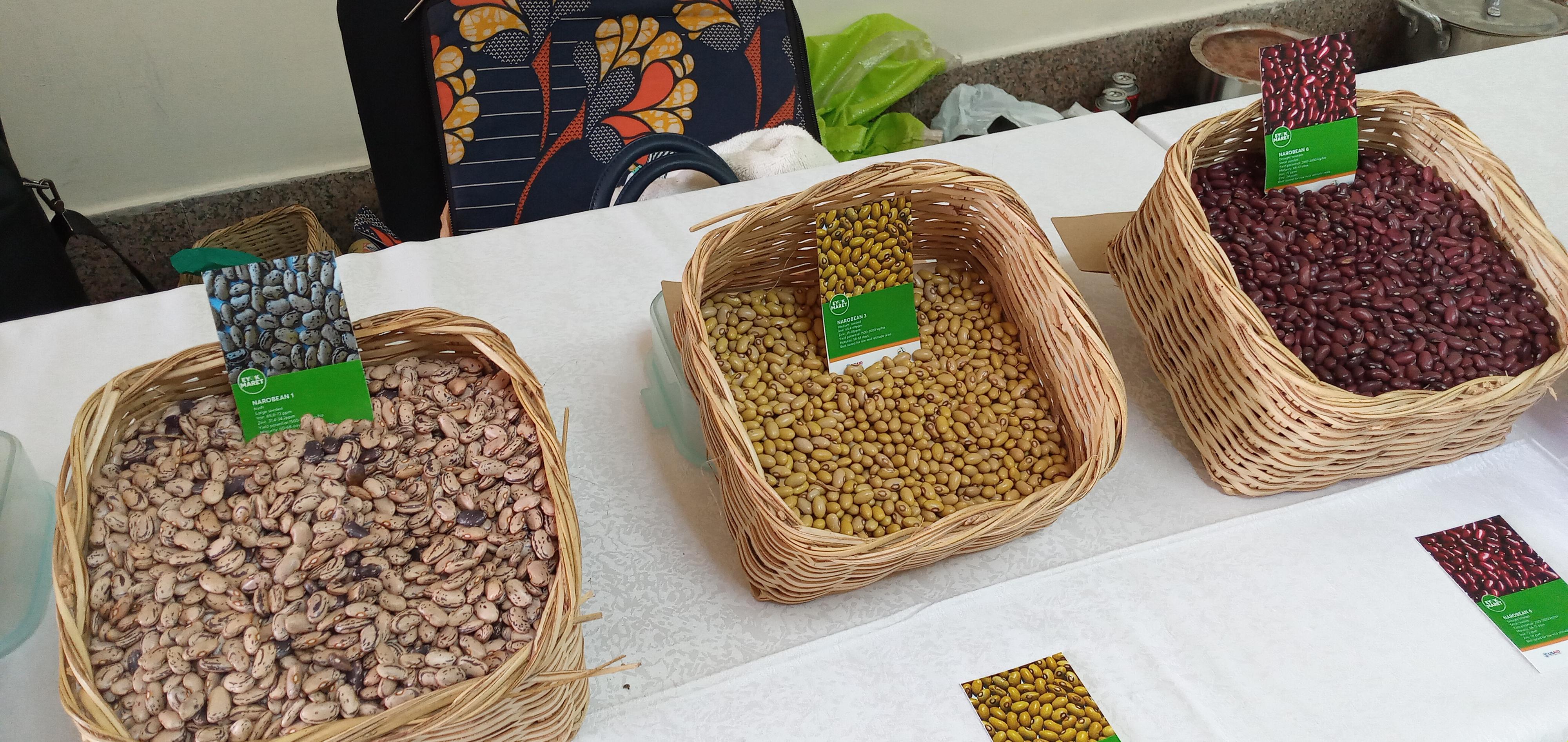Prime
Why you should carry out mixed farming

Mixed cropping with maize, pineapples, groundnuts and French-beans. Photo | File
What you need to know:
- The farmer can decide to rear livestock as they grow crops or choose to grow different kinds of crops. The main reason for farmers to choose mixed farming is to increase their income as there are many sources from which to make money.
Mixed farming is an agricultural method in which more than one agricultural practice takes place on the same agricultural field.
The farmer can decide to rear livestock as they grow crops or choose to grow different kinds of crops. The main reason for farmers to choose mixed farming is to increase their income as there are many sources from which to make money.
Mixed farming systems can be classified in many ways and completely depend on the size of the field and the orientation of the market.
Mixing within crops and animal systems
In this system, multiple crops will be raised or different animals will be raised together.
For example, if multiple crops are raised, then a combination of grain and legume will work well. This is because legume provides the grain with a very good amount of nitrogen.
Even then, there would be good space and maximum light available if perfect planting formations are chosen. Moreover, coming to mixed animals, poultry-fish production would work out because the chicken waste can be used as food for fish.
Diversified versus integrated systems
In diversified systems, few of the components seem to be independent, whereas, in integrated systems, the resources will be used to their maximum which makes it highly dependent.
The diversified system will have livestock or crops which can be independent. Poultry, dairy and crop farming can be done in an independent way. This is done to decrease the risk, but not for the recycling of resources.
The integrated system is used for recycling resources. The livestock and poultry can be mixed with the crops for farming and the products generated from each crop can be used as a resource for another farm. For example, the waste generated by the livestock can be used as manure for the crops and few crops can serve the livestock as food.
Advantages
With mixed farming, the fields will not be bare at all, producing some crop or another continuously.
Continuous production will obviously improve the productivity of the land on the farm and profits will be improved as the land will be under production throughout the year.
Either the crops or animals will support the other which will reduce the cost of food and manure.
If animal husbandry and crop farming are induced on land, then the crops will help the animals for food and in turn, the waste generated by animals can be used as manure for crops.
As recycling of wastes generated from plants and animals is used internally, there would be less requirement of inputs which should be bought. Even if one crop fails, the farmer can compensate for the loss with the other crop.
Disadvantages
This type of farming is tougher to maintain as compared to the monoculture type. This is due to the number of activities which are involved in mixed farming. Monitoring and maintenance of mixed farming should be done very carefully and hence it is difficult.
There is also a chance that a mistake in one crop will affect the other one.
The farmer should have complete knowledge of mixed farming. As there are many activities involved in mixed farming, it would be better if the farmer has good knowledge of several sections of farming.
The main drawback of mixed farming is its capacity to grow crops. If you are growing multiple crops, then there would be less chance for the farmers to grow it to the full extent due to the limitations in space.




